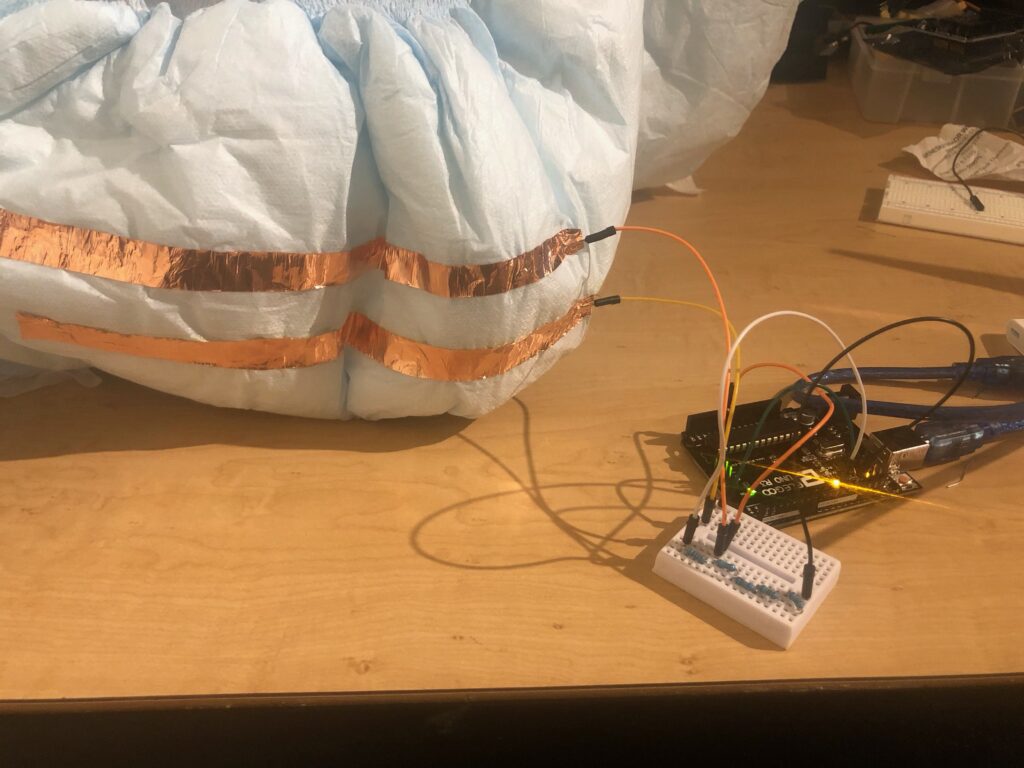Existing Devices
DryBuddyFLEX 3/ DrySmart
SMARTZ by Simavita
Smart Passive Sensors by RFMicron
-Real time detection and notification
-Wireless capabilities
-Notification is obnoxious
-Only works when sensor is fully immersed in liquid
-Sensor is reusable
-Sensor can be incorporated with any brief
– Real time detection and notification
-Single use sensor
-Sensor cannot be incorporated into any diaper
-Expensive to buy custom diapers
-Additional wellness indicator informs of pressure sore risk, falls
– Real time detection but not notification
-Single use sensor
-Sensor can be attached to any brief
-Detection is unreliable
-Only works within 3-4 feet
These devices similar to our design are on the market, yet they were unknown to our customer and have yet to be in widespread use. From looking at these existing options and ordering a DryBuddy sample unit to test, it was determined that none of these products are quite optimal for our customer. SMARTZ by Simavita comes close to satisfying our customer needs and wants, and we would encourage them to try this if cost is not a barrier. We liked the real-time detection/notification aspect and attempted to incorporate many elements from each of these into our own design. Upon testing and evaluation of the DryBuddyFLEX 3, we found that the buttons to change the volume of the alarm were very small and no visual indication was given to ensure the button was pressed.
Our Prototypes: DigniTection
Prototype 1: Pantyliner with Conductive Thread-based sensor

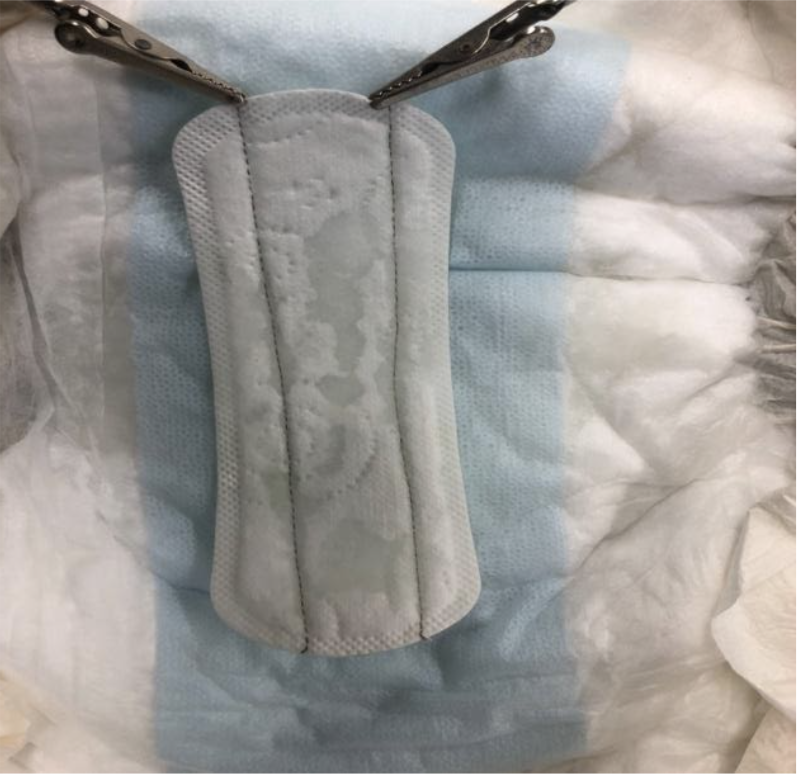
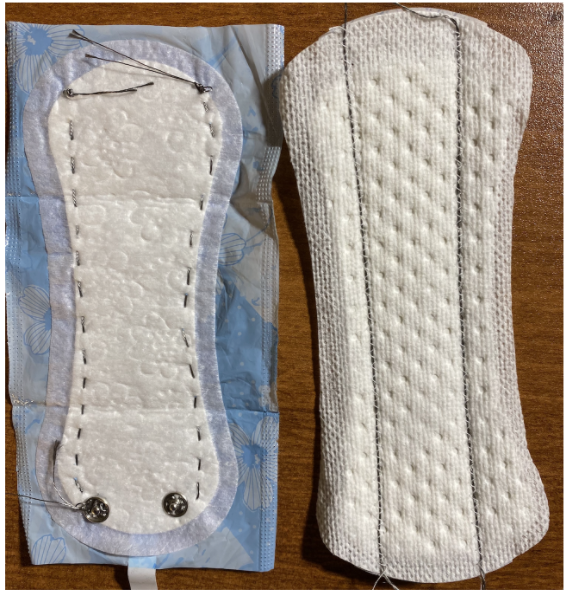
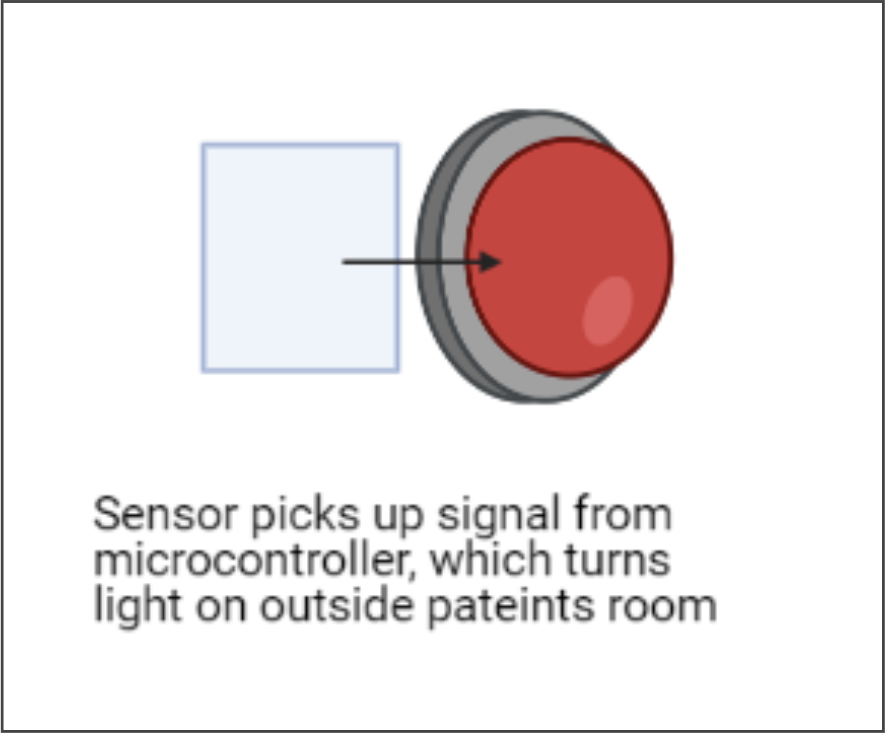
This figure represents the first prototype that we were considering: a pantyliner with 2 conductive threads running parallel to each other as a sensor. However, we decided that this prototype would be very difficult as the conductive stainless steel thread proved hard to stitch into the pantyliner.
Prototype 2: Hydrogel-based RFID sensor with incorporated Copper Nanoparticles (NPs)
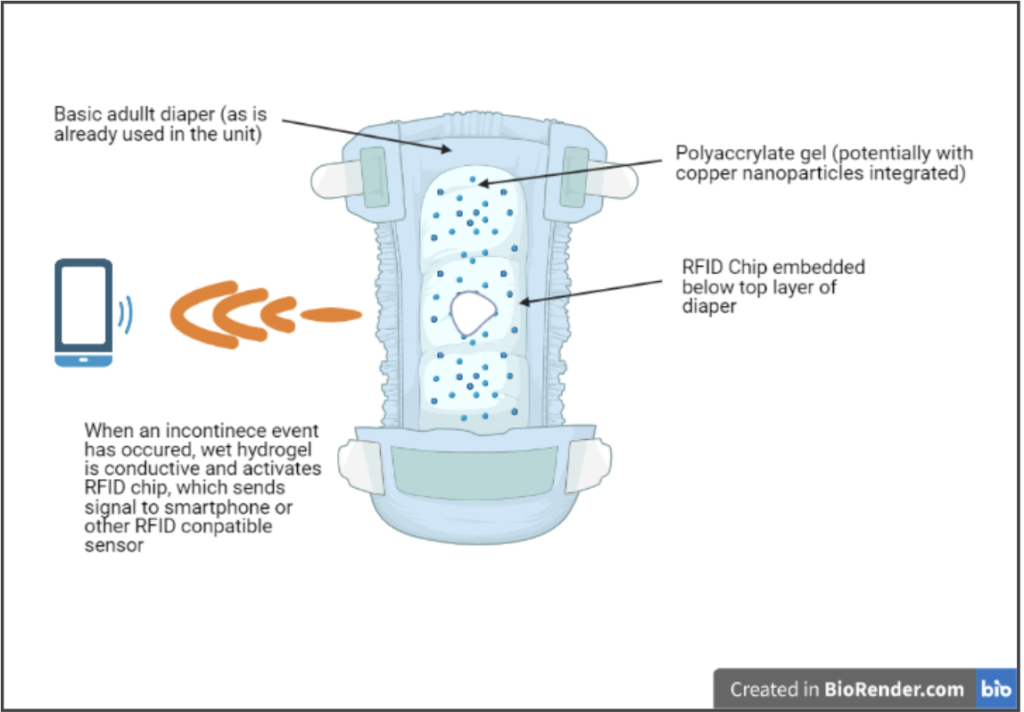
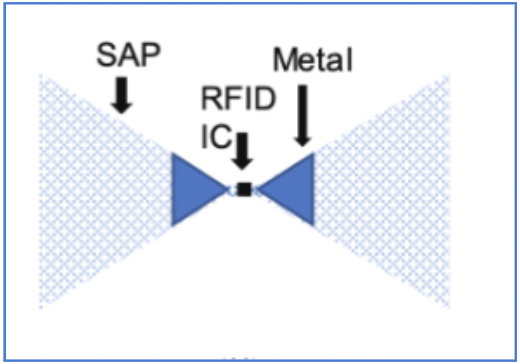
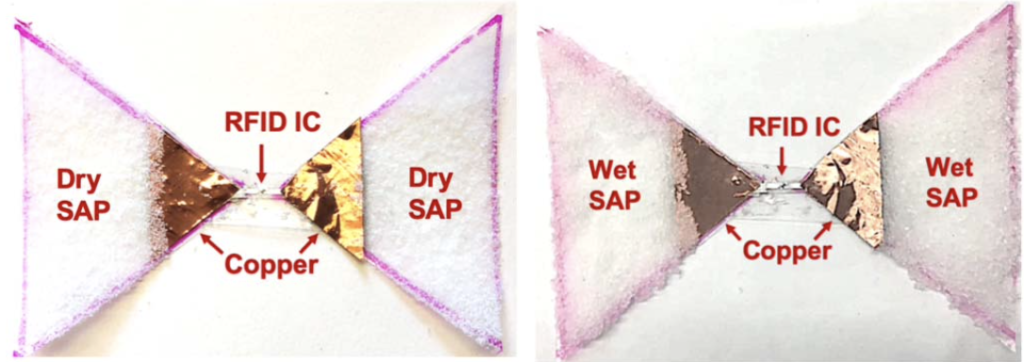
This figure represents the second prototype that we were considering: a hydrogel-based RFID sensor potentially with incorporated Nanoparticles (Sen et al., 2020). This seemed like a great option, but we realized the programming, materials, and expertise required would exceed the amount of time that we have to do the project.
Prototype 3: Copper sheet-based sensor with an NFC IC chip, microcontroller, and NFC-compatible reader.

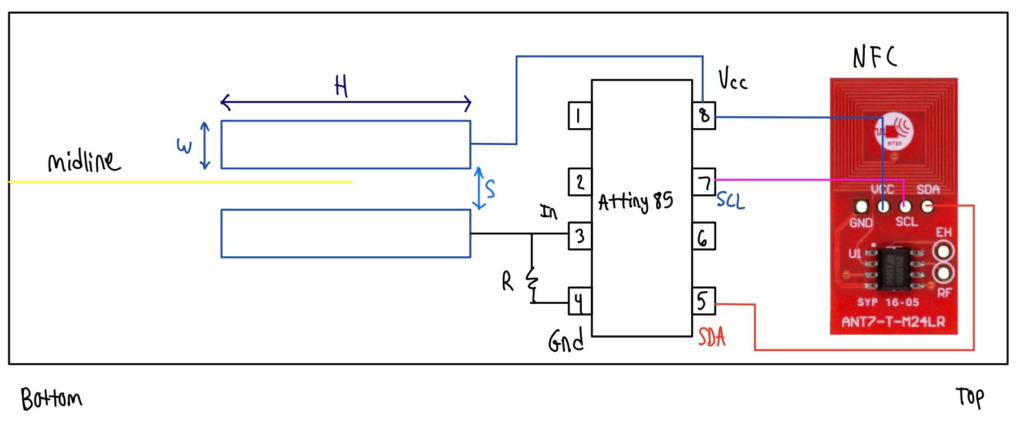
Parameter
Value
Width of Diaper (W)
1.3 mm
Spacing between Electrodes (S)
2.5 mm
Height of Diaper (H)
24 mm
Resistance of Resistor (MOhms)
5 MOhms
Frequency of NFC tag
13.56 MHz
Size of NFC antenna
14 mm (Length) x 14 mm (Width)
Internal Tuning Capacitance of NFC Tag
27.5 pF
This is the current prototype that we are working with and we believe that we can sufficiently develop this prototype by the end of the semester. The sensor is composed of two copper electrodes near the bottom of the diaper, as can be seen in the diagram above. Upon exposure to urine, the dielectric constant between the two electrodes changes, and there is also a change in resistance. This signal is read by a microcontroller, which acts in conjunction with an NFC tag.
Once an incontinence event occurs, the resistance values that the microcontroller is receiving will cross the threshold value. This will cause the microcontroller to communicate with the NFC antenna through an I2 C interface to send a signal to a nearby NFC-compatible smartphone. This smartphone will then send a text/call to a central smartphone at the nurse’s station. There are 20 rooms in the ward, most of which are two patients per room while only 5-6 have one patient. There is also a table 1.5 meters away from the patient on which an NFC-compatible reader could be placed on.
